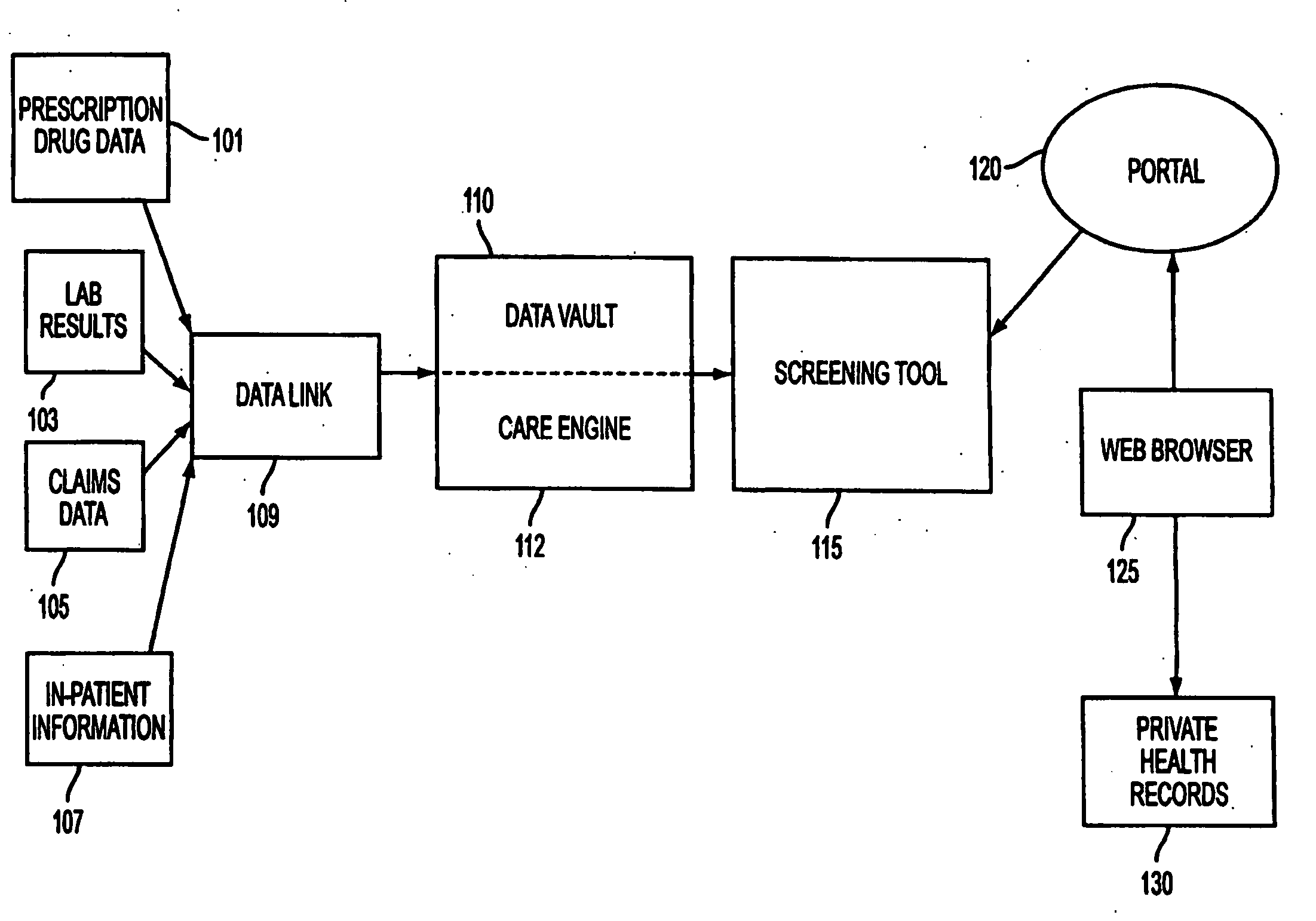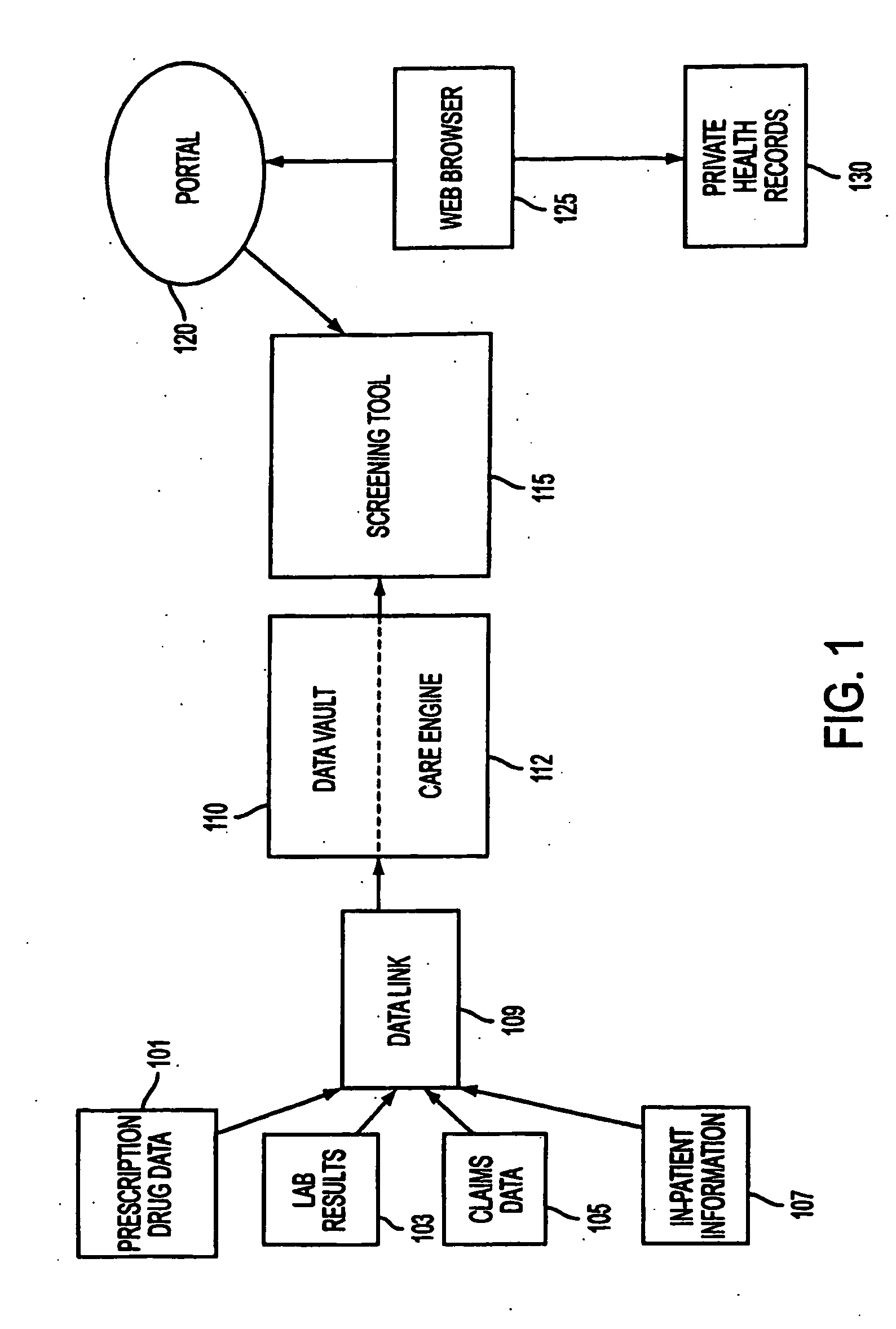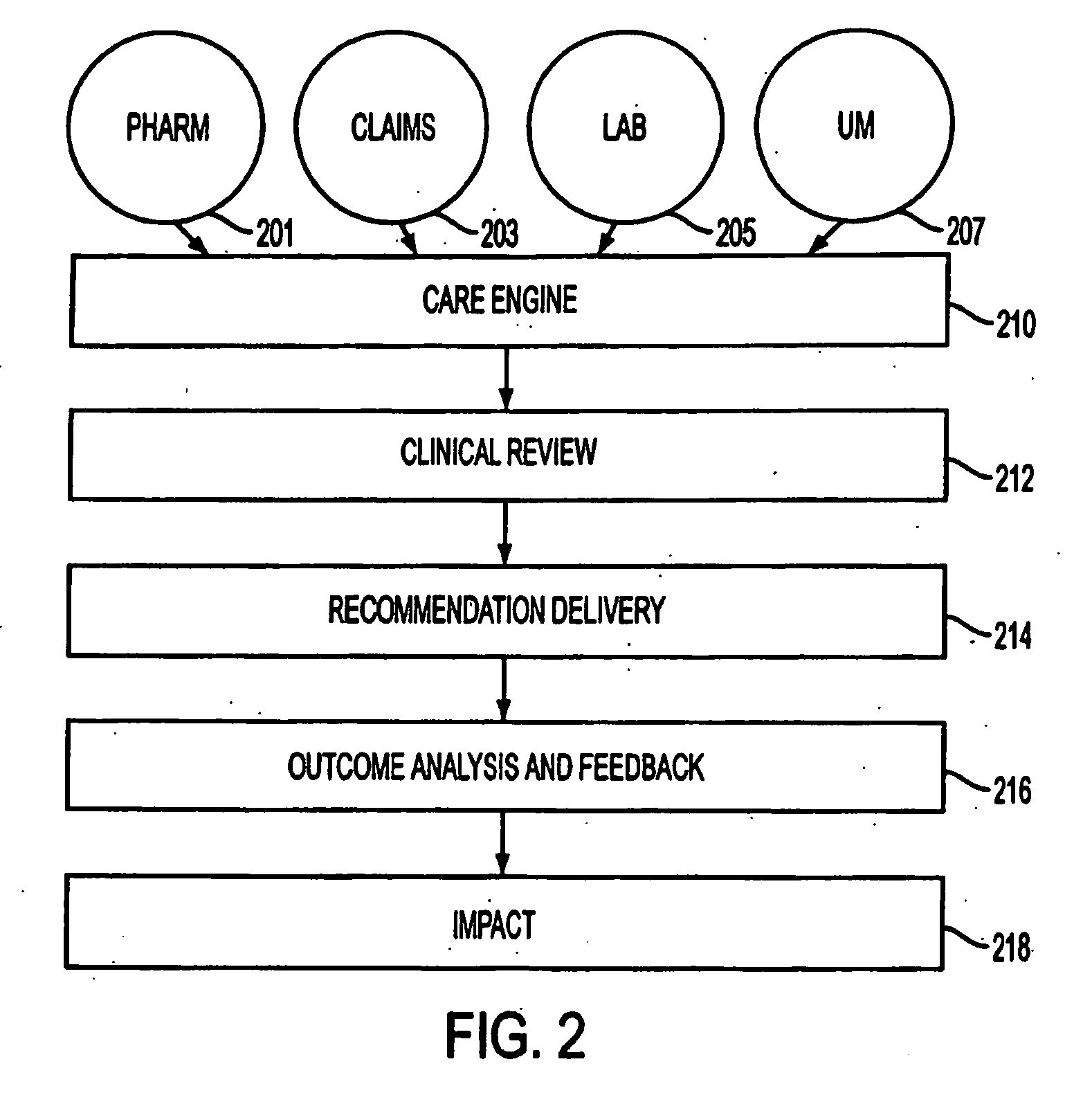Care engine
a technology of care engine and medical analysis, applied in the field of early warning trigger analysis system, can solve the problems of increasing concerns about medical errors and clinical quality, affecting affecting the quality of life of patients, so as to improve the care of medically mismanaged individuals, improve the care of patients, and facilitate the effect of monitoring clinical care plans
- Summary
- Abstract
- Description
- Claims
- Application Information
AI Technical Summary
Benefits of technology
Problems solved by technology
Method used
Image
Examples
Embodiment Construction
[0040]The present invention offers a unique solution to many of these industry issues. By combining proprietary technology with the benefits of the Internet, the present invention provides a complete clinical care management solution. The complete solution will be described in conjunction with FIG. 2.
[0041]The present invention is able to identify sub-optimal care and potential clinical errors. The Care Engine's software tool 210 uses proprietary clinical matrices to comb through high volumes of patient data to identify potential diagnostic or treatment errors. The present invention integrates clinical information, such as laboratory test results 205, prescription drug data 201, health plan claims data 203 and in-patient claims data and notes 207 to create a comprehensive picture of a patient's health and treatment status, analyzes this information using the matrices embedded in the Care Engine 210 and identifies potential deficiencies in a patient's medical care.
[0042]The present i...
PUM
 Login to View More
Login to View More Abstract
Description
Claims
Application Information
 Login to View More
Login to View More - R&D
- Intellectual Property
- Life Sciences
- Materials
- Tech Scout
- Unparalleled Data Quality
- Higher Quality Content
- 60% Fewer Hallucinations
Browse by: Latest US Patents, China's latest patents, Technical Efficacy Thesaurus, Application Domain, Technology Topic, Popular Technical Reports.
© 2025 PatSnap. All rights reserved.Legal|Privacy policy|Modern Slavery Act Transparency Statement|Sitemap|About US| Contact US: help@patsnap.com



